After the first login to the system
The Navigator system is built of elements that we called applications. Each application is a collection of forms, lists, and workflow procedures for a specific area, such as human resources (HR), documents, projects, payments etc. During the first run, all applications for which the user has permissions are visible in the menu on the left. When you hover the mouse over this menu, you can select the application or its element.

Application selection
If there are too many applications and working with a full set is inconvenient, we can limit ourselves to one application. Just select it from the application menu.
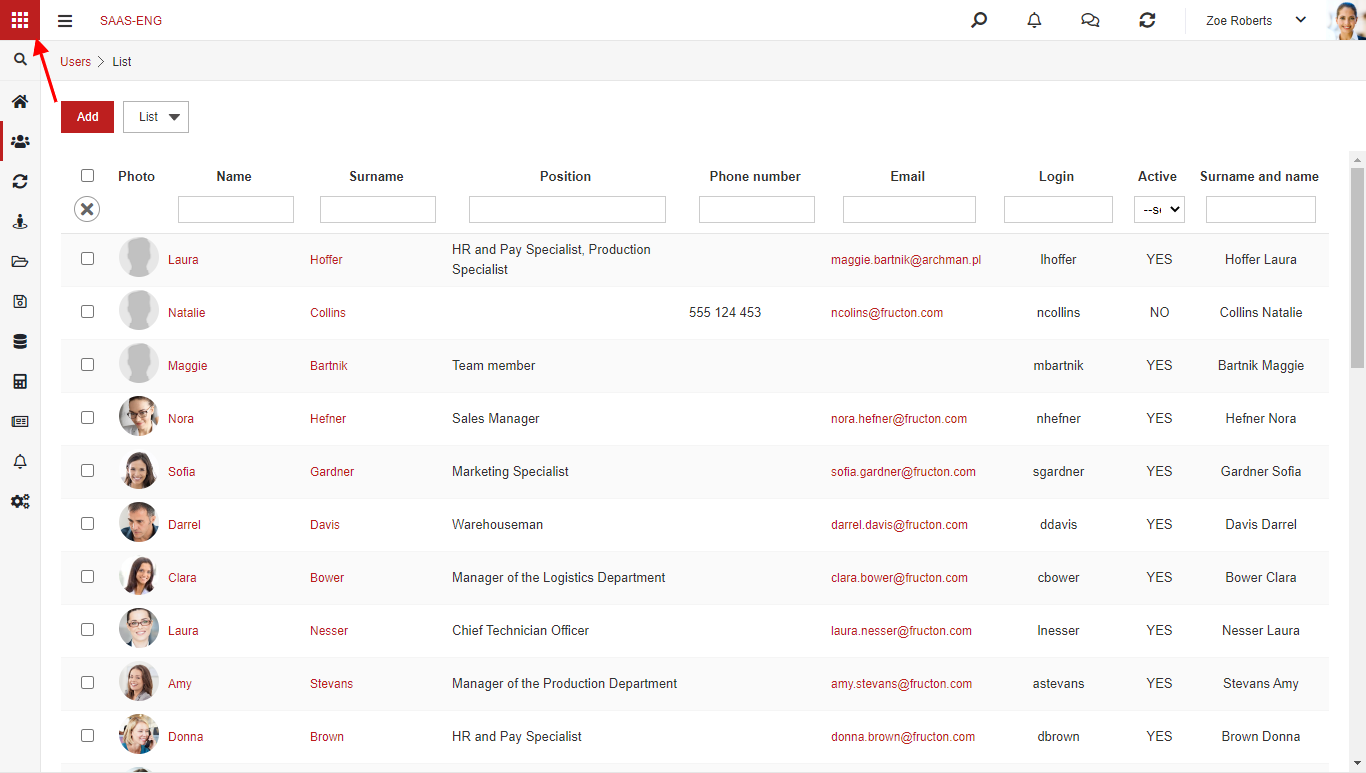
When an application is selected, the menu on the left will only contain items from that application.

Through the application menu, we can always switch to another application or select the mode of all applications.

Navigating the menu
In some applications an additional area appears. For example, in the Documents application, we have document categories at our disposal by which you can quickly narrow down the list of documents you are interested in to one category.

These additional areas limit our work area, which makes us see less on the screen. With extended lists or forms, this can be a problem, so both the menu and additional areas have the option of minimizing them.
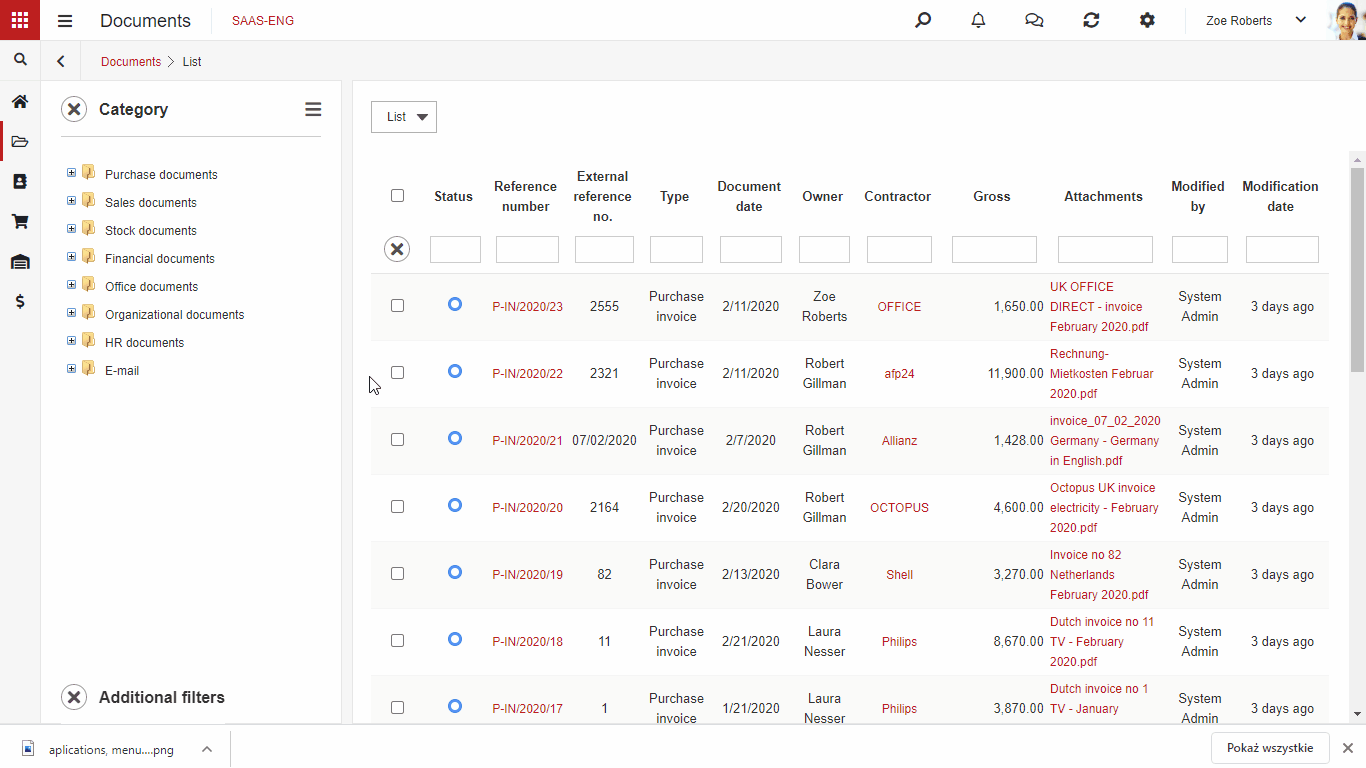
Minimization limits the menu items to icons or the initials of the menu items.
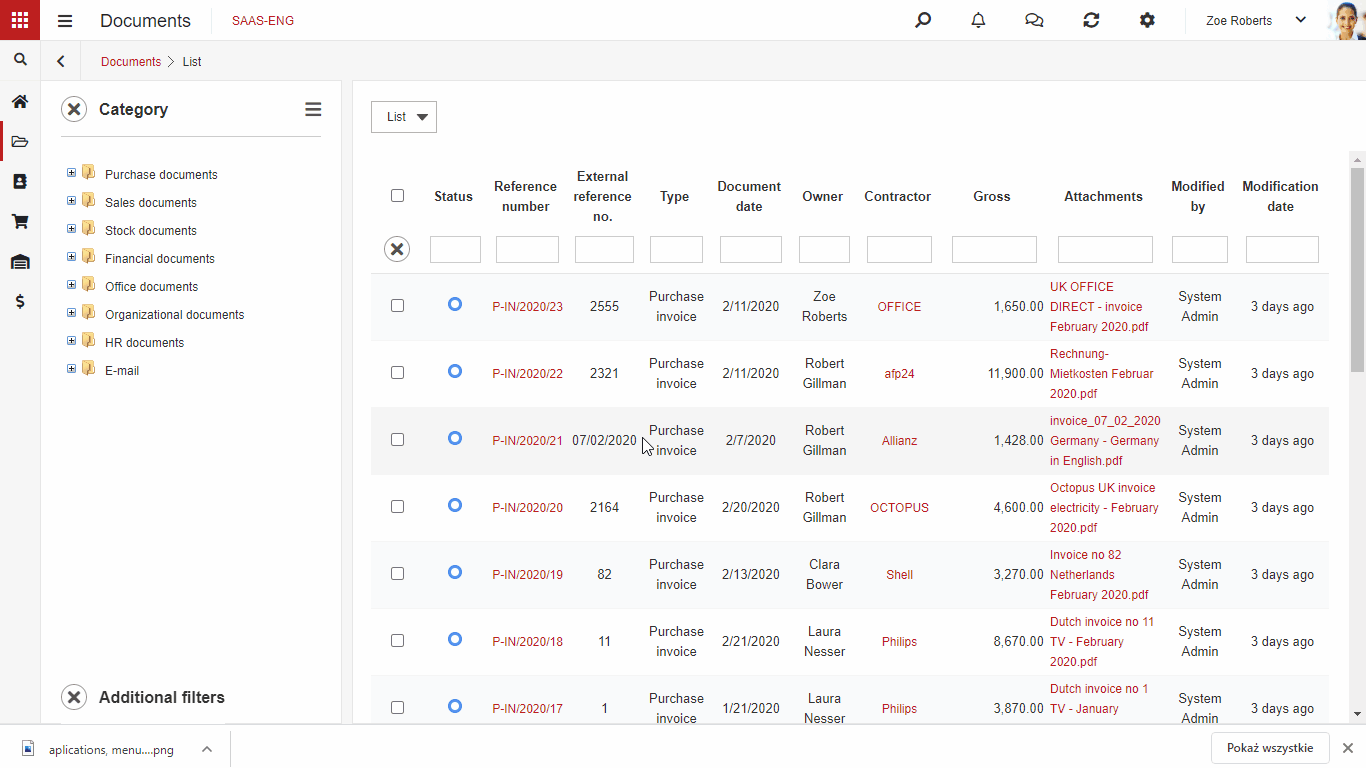
Similarly, in additional areas, we can hide them completely. Thanks to these mechanisms, we have almost the entire screen available for the elements we are working on.
Favourite items
There is not always possible to limit yourself to working in one application. Sometimes you have to switch between items from two or more applications frequently. Selecting these items from the menu of each application is not comfortable. We can simplify the task by adding the most frequently selected items to your favourites.
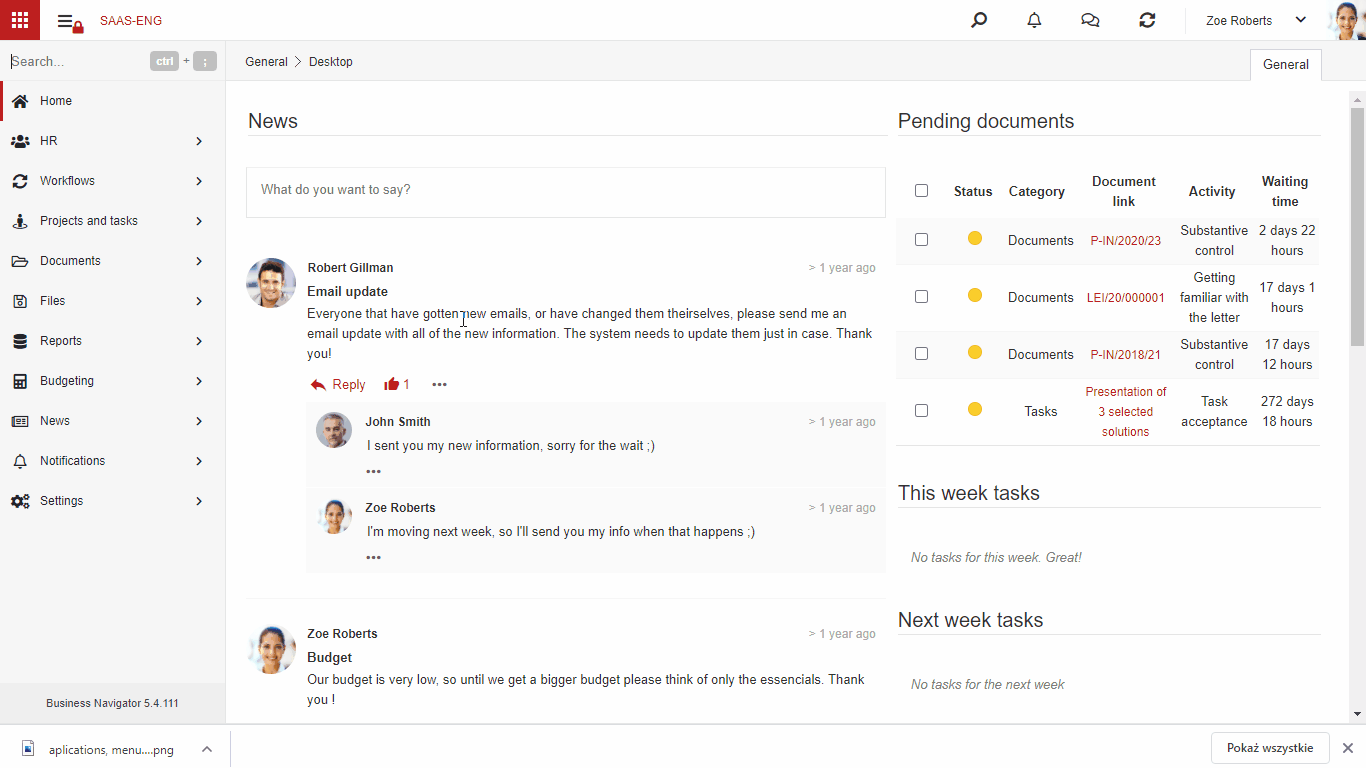
Having prepared favourite elements, we can choose them just like a regular application. Thanks to this, in the menu we will only have the elements that we use every day.
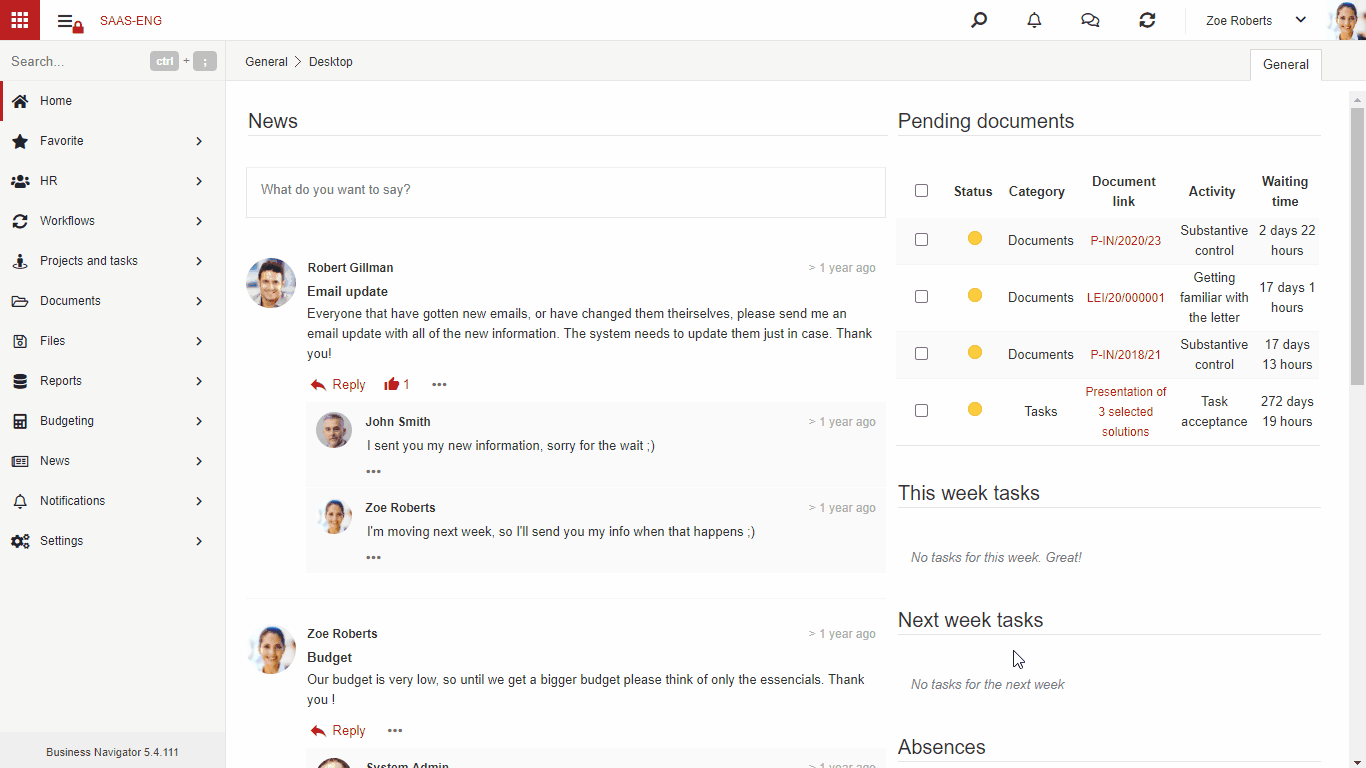
Desktops
The first screen that the user sees after logging into the system is the desktop. The standard Navigator dashboard looks like this:
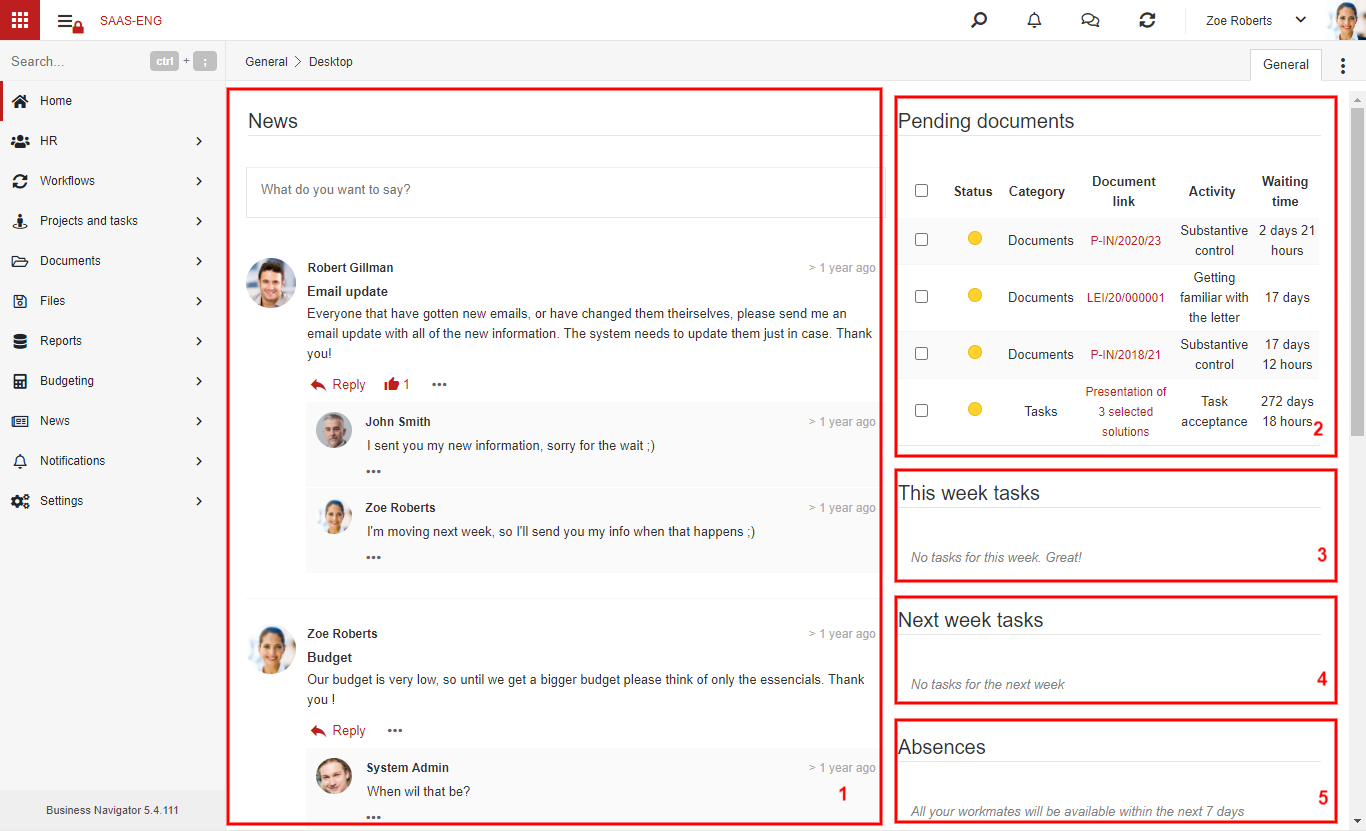
We have the current information (1), documents (2) and tasks (3) pending execution, a task plan (4) and an absence plan (5). The administrator can change the standard desktop, so the desktop may look different in a specific deployment.
The dashboard is used to present data and to quickly move to documents that await the user’s reactions – e.g. letters that must be approved by the user. The system administrator can create new desktops tailored specifically for a department or user. For example, a dashboard showing the current sales report:

Switching between desktops is switching between tabs.
The user can activate and deactivate the desktop at any time. Active desktops are visible in the tabs on the home page, inactive desktops are invisible.
Activation and deactivation is done via the Settings> Personalization> Desktops app
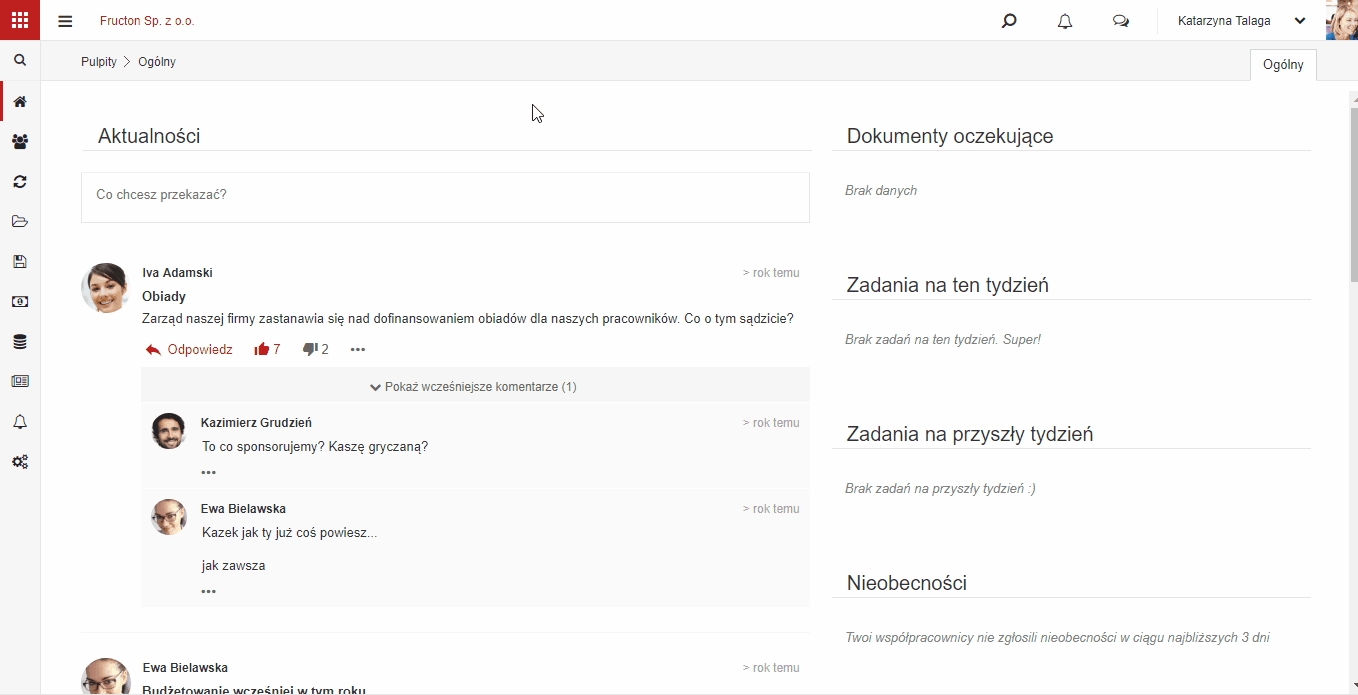
In the settings, we have a list of desktops with an indicator whether the desktop is active – a green dot on the list. The activation is performed by selecting the option from the More menu after selecting the desktop. The desktop is available immediately after activation.
The order of desktops on the list corresponds to their order in the tabs, the first desktop on the list is normally opened after starting the system.



